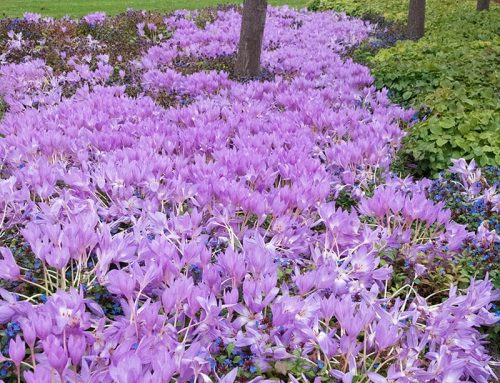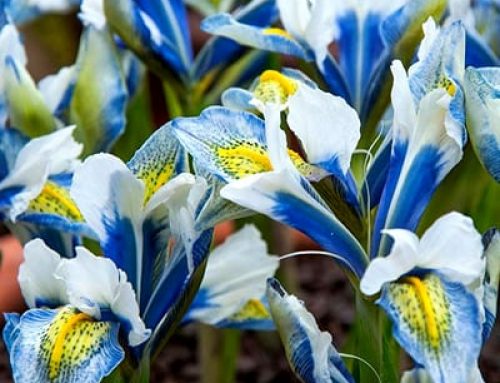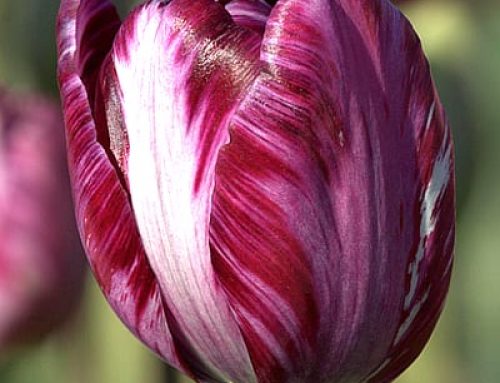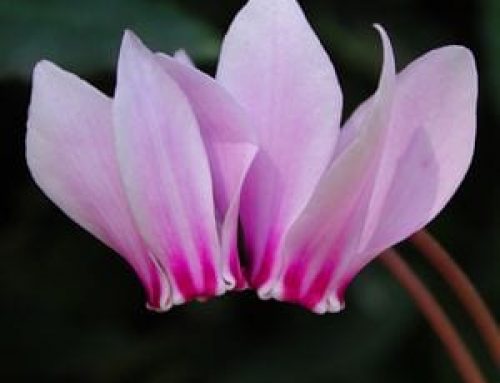Botanical Tulips
Jewels of the Spring Garden
Once upon a time no one in the western world had ever heard of a tulip. The Turks knew all about them and grew them as early as 1000 AD. So, unbeknownst to us, across the wilds of central and western Asia and in Turkish gardens about 100 species of exceptional little bulbs would emerge from their winter dormancy every spring to sparkle with their vibrant and beguiling colours.
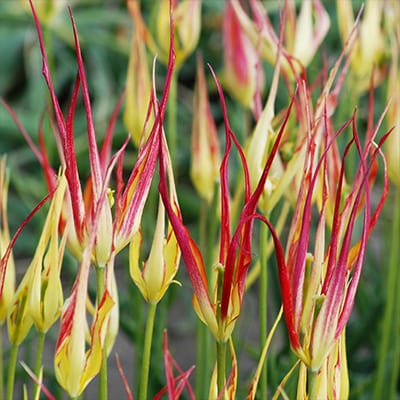
Tulipa acuminata has narrow, wild, twisting yellow petals tipped with scarlet as if in flame.
Then in and around the mid to late 16th century, tulips arrived in Europe. These would have been the botanical species from Turkey and Eurasia so beloved in the gardens of Asia Minor. The bold shapes and colours of tulips were unlike any other flowers available in Europe at the time. They quickly caught the attention of gardeners and collectors becoming de rigeur and a sign of status in households both rich and poor. Botanists and horticulturalists started their breeding work and began to create more and more exciting forms.
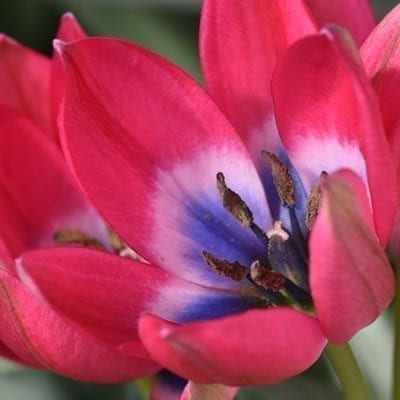
Tulipa ‘Little Beauty’ has deep pink petals with an interior of black, royal blue, and white
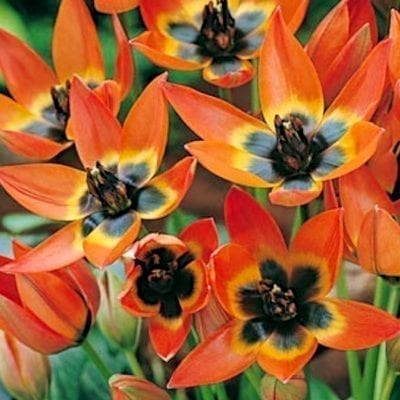
Tulipa ‘Little Princess’ has fiery orange flowers and dark black centres edged in yellow.
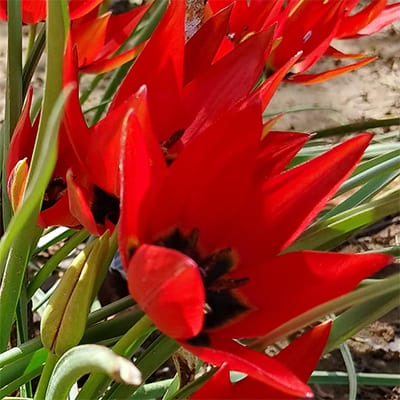
Tulipa ‘Lizzy’ is a striking cultivar with long, pointed, bright red petals flaring from black bases.
By late 1636 and early 1637 ‘Tulipmania’ was at its peak in Holland. Tulips were so popular that, at the time, the most desirable varieties could cost more than a house in Amsterdam! The tulip craze lead to a huge speculative market in tulips, one in which ordinary men clammered to participate because of the vast amounts of money being made. They sold their businesses, family houses, farm animals, home furnishings and dowries in order to buy bulbs that they had never seen.
Eventually, supply increased and the price of tulips plummeted. The “Tulip Crash” sent many people into bankruptcy. Others lost all of their savings. All because of the tulip.
The Dutch government then introduced special trading restrictions in order to avoid further fits of uncontrollable plant lust on the part of its population. Today, after hundreds of years of breeding work tulips are one of the most beloved of flowers and one of the world’s major commercial flower crops, both for cut flowers and for horticulture.
Botanical Tulips
Before the Dutch discovered them and long before there were Darwin tulips, Triumph tulips, parrot tulips and bouquet tulips, fringed and lily-flowering tulips, peony-types and viridifloras, French and Kaufmanniana tulips and all of the other large, bold and colourful hybrids, there were the species — those small, beguiling denizens of southern Europe and Asia Minor with an allure and beauty all their own.
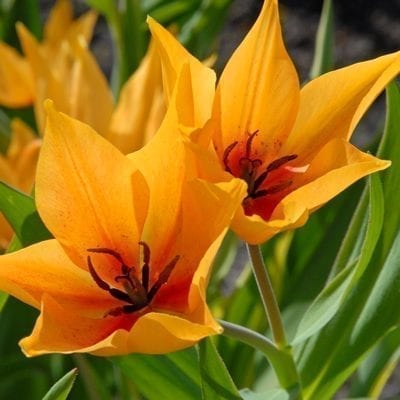
‘Shogun’ has light orange flowers with a red flush at the centre and occasionally red stripes. It is multiflowering with multiple flowers per bulb.
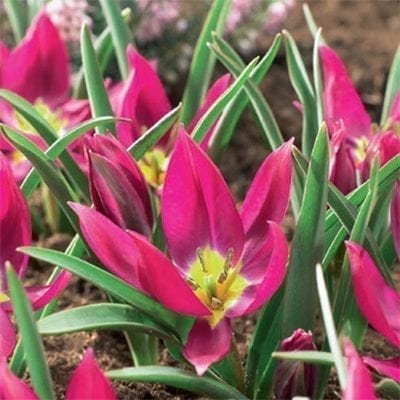
Tulipa pulchella ‘Eastern Star’ has magenta flowers with a bright yellow base in the centre of the flower.

Tulipa wilsoniana has relatively large cup shaped red flowers sitting atop rippled, bluish foliage.
Botanical tulips are what tulips used to look like and still look like in the wild. They are smaller in bulb size, height, and flower size than your standard spring tulips but they are just as colourful and perhaps a little bit more sophisticated. They look more like sparkling jewels than a big brash boisterous flower.
Botanical tulips also offer something that the big hybrid tulips often don’t: staying power. Whereas the hybrids will last for a year or two, maybe three, the botanical tulips are perennial as long as they are planted in good conditions consisting of hot, sunny spots in free-draining soil with slow release fertilizer sprinkled around the bulbs as they emerge each spring. They will return year after year, blooming in early to mid spring, and will often multiply with each passing season. They are great for naturalizing, planted between later emerging perennials or under-planted beneath groundcovers. They are also great in containers.
At Phoenix Perennials we love botanical tulips and carry 30 or more species and cultivars each year. They are available for pre-ordering through the summer and fall for pick-up or shipping in late September and early October. Should supplies last, we may also have them available potted up in early spring. Visit our online store today!
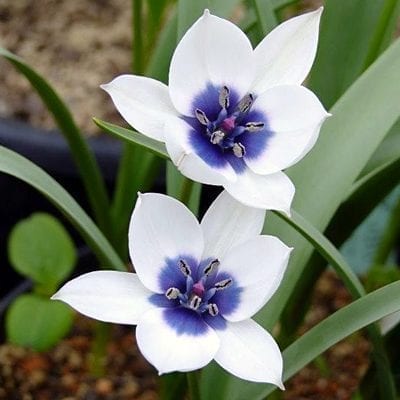
Tulipa humilis ‘Alba Coerulea Oculata’ is a rare and beautiful selection with pure white flowers with stelly navy blue centres.
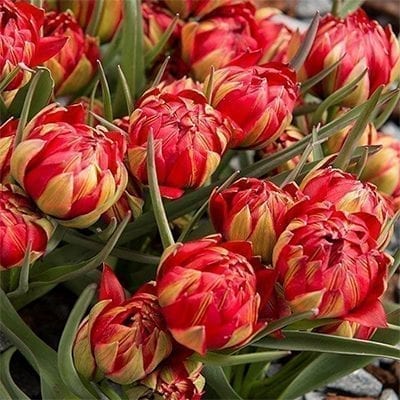
Tulipa humilis ‘Samantha’ is a stunning botanical tulip with double flowers of rosy red. It is multi-flowering with up to six flowers per bulb!
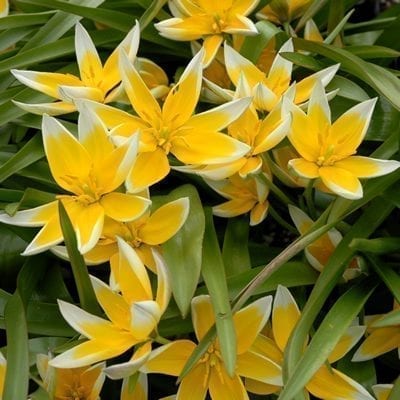
Tulipa tarda (“Daystemon Tarda”) is one of the most popular species tulips with cheerful yellow petals tipped with white and boasting up to 6 flowers per bulb!

